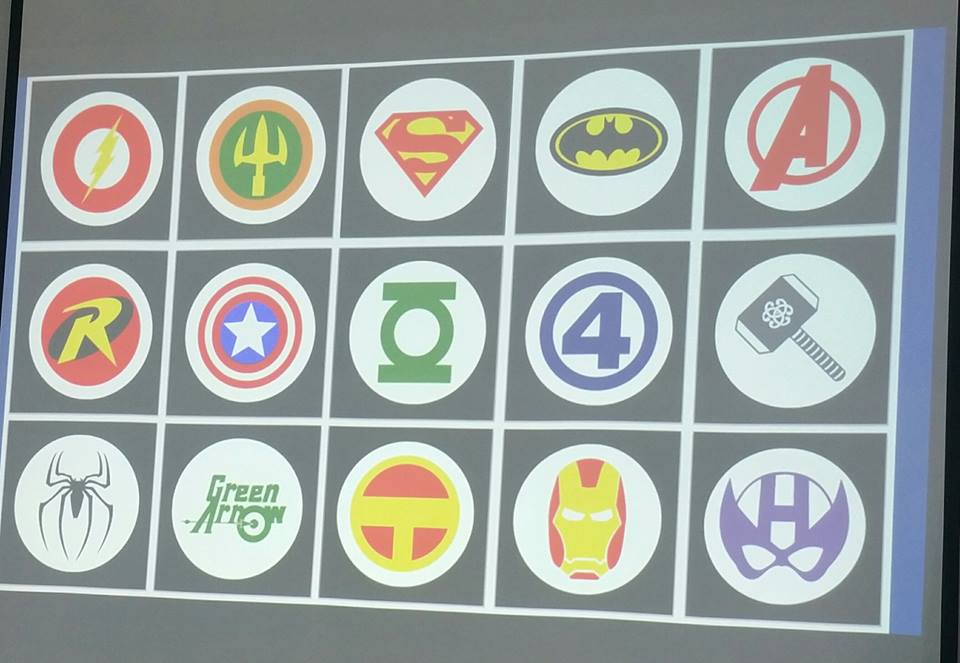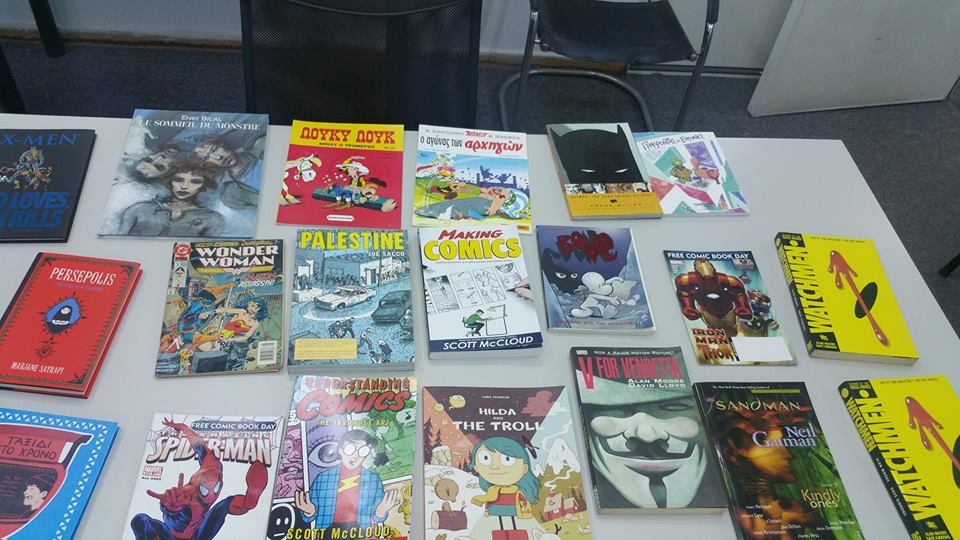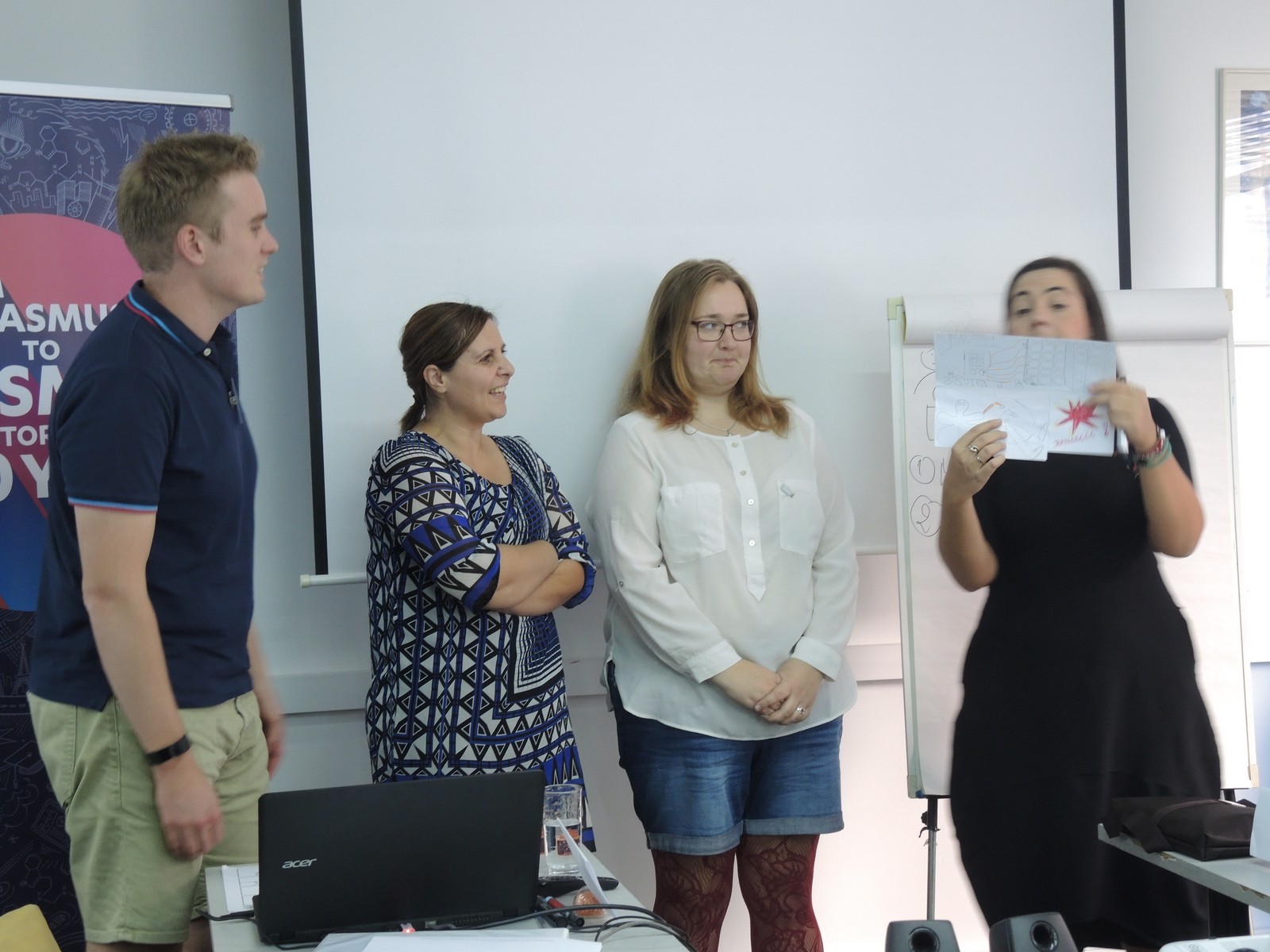DAN 4 (četvrtak, 12. 10. 2017.)
VRIJEME JE ZA STRIPOVE!

Ako ću bit potpuno iskrena, nikada nisam bila veliki pobornik stripova. Naravno, čitala sam ih u djetinjstvu i poticala svoju djecu da ih čitaju i obojica su kao petogodišnjaci počeli čitati s pet godina i prva literatura su im bili upravo stripovi. Čak koristim stripove u nastavi s vremena na vrijeme i učenici se ponekad izražavaju stripom, ali nikada nisam strip doživljavala kao važni edukacijski alat u svojoj nastavi.
Ali jednog četvrtka, točnije,12. listopada 2017. moja perspektiva se promijenila – u potpunosti. Tog dana naš predavač bila je Lida Tsene, koja radi u Odjelu za Komunikaciju, Na Panteion Fakultetu za medije i kulturu u Ateni. Jednostavno ne možeš ostati ravnodušan kada govori o svojoj velikoj ljubavi, stripovima. S lakoćom stripove pretvara u priče različitih tematika. Vjerovala sam joj kad je rekla da priče imaju supermoć prenošenja znanja i mogu odlično sredstvo učenja u učionici i izvan nje. Proširila sam svoja znanja iz opće kulture, saznala tko je kreirao prvog stripovskog junaka, da je Maus autora umjetničkog imena Art Spiegelman dobio Pulitzerovu nagradu i da, kao i Persepolis, progovara o vrlo ozbiljnim temama.
Prvo smo se upoznali s načinima i mogućnosti primjene stripa u aktivnostima pripovjedanja u osnovnoj školi s naglaskom na kreativnosti, timskom radu i kreativnom pronalaženju problema. Voditeljica radionice nam je također dala neke primjere kako strip koristiti u nastavi povijesti i zemljopisa kaoi na nastavi jezika. Sada također vjerujem da nije ključno jesi li dobar u crtanju ili ne, već je važnije ispričati priču.
Predstavljena nam je i japanska tehnika pričanja priča Kamishibai koja je najprimjerenija najmlađim uzrastima djece.
Nakon teorijskog, slijedio je praktični rad te jedva čekam da neke aktivnosti isprobam sa svojim učenicima.

IN ENGLISH
DAY 4 (Thursday, October 12th, 2017)
To be completely honest, I was never a big fan of comics. Of course, I read them in early childhood, and I encouraged my children to do so, and they both start reading at the age of 5 as they were very interested in comics. I even use some comics in my classroom from time to time, and I ask my students to make storyboards, but my heart was never really into it.
But from Thursday, October 17th, 2017 now on some things were changed –a lot. Ms Lida Tsene that works in the Department of Communication, Media and Culture Panteion University, Greece was our trainer. You just cannot stay untouched when she talks about her great love, comics. She incorporates elements of this art into her narration. I believed her when she said that comics have the supernatural power of transferring knowledge and can be used as a learning tool and can be used inside and outside the classroom. I expanded my knowledge of general culture, who created the first comic heroes, that Maus from Art Spiegelman won Pulitzer prize, a brilliant comic that talks about serious issues as well as Persepolis.
Firstly, we were introduced to the methodology of collaborative comics storytelling in elementary schools with a focus on creativity, but also on team building, brainstorming, collaboration and creative problem-solving. Ms Tsene also gave us some examples of how to use it in Geography, History and language lessons. Now, I also believe that it is not essential if you are good at drawing or not, it is more important to tell the story.
She also presented Japanese Kamishibai techniques for storytelling that can be used with very young learners.
We also had a lot of practical work, and I cannot wait to try some of the things with my students.
Firstly, we were introduced to the methodology of collaborative comics storytelling in elementary schools with a focus on creativity, but also on team building, brainstorming, collaboration and creative problem-solving. She also gave us some examples on how to use it in Geography, History and language lessons. Now, I also believe that it is not important if you are good at drawing or not, it is more important to tell the story.
She also presented Japanese Kamishibai techniques for storytelling that can be used with very young learners.
We also had a lot of practical work, and I cannot wait to try some of the things with my students.
